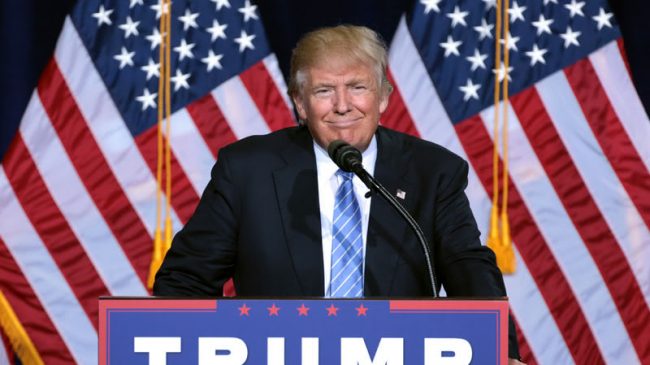Since the Trump/Republican election sweep, reporters and others have asked for my thoughts on whether the Trump infrastructure plan will gain congressional support and lead to “fixing” America’s somewhat inadequate (but hardly “crumbling”) infrastructure. The answer is far from clear.
First of all, there is not a single Trump infrastructure plan: there are more like three, at this stage of the transition. First is a repeated figure of a $550 billion program, with no details on where that money would come from or how it would be spent. Second is a $1 trillion proposal for investor-funded P3 infrastructure, detailed in a 10-page paper by Trump advisers Wilbur Ross and Peter Navarro. And third is recent mentions of an infrastructure bank, possibly funded as part of an overhaul of the tax code and currently championed by Trump adviser Steven Mnuchin.
Since the Ross/Navarro proposal is the most dramatic departure from current federal practice, and relates directly to the major subject of this newsletter, let’s take a closer look at what it is and is not. For some reason, its authors believe a federal tax credit for 82% of the equity invested in P3 concession is necessary to provide an incentive for investors. That seems odd for two reasons. First, what infrastructure investment funds and concession companies lament is the lack of a pipeline of US projects, not the lack of a federal tax incentive. Second, tax-exempt U.S. pension funds and all overseas infrastructure investors gain no benefit from a tax credit. In addition, Ross and Navarro engage in arguably sketch projections of eventual off-setting federal income tax revenue, to claim that their plan would be revenue-neutral. But that distracting argument goes away if the tax credit is deleted from the plan.
Making that change leaves some details to be filled in. Critics have quickly seized on the kinds of projects that would not be included, because the plan assumes customer user fees as the revenue stream in each case. So that excludes transit, passenger rail, schools, public buildings, etc. But what Trump and Ross/Navarro are mainly talking about are roads and bridges, airports, seaports, electricity transmission lines, and water and wastewater systems., all of which have (or could have) user-fee revenue streams of large enough magnitude to service revenue bonds and provide a return on equity.
Brad Plumer of Vox trashes the highway portion of the plan for applying only to the handful of existing toll roads and toll bridges, thereby ignoring the vast majority of non-tolled roadways. But since revenue-based P3 concessions are a good fit only for major projects, that objection is beside the point. The focus of the plan is to rebuild aging infrastructure, and to do so without a major federal tax increase. Well then, the only alternative funding source for large-scale highway and bridge replacement is tolls. Toll-financed Interstate highway and bridge replacement alone has been estimated as a $1 trillion-plus program. All Congress needs to do—potentially as part of authorizing a trillion-dollar Trump rebuild America program—is to permit states that wish to participate to use tolls for these replacement facilities.
And if the program is applicable to the other kinds of infrastructure noted above, they all already have user fees of various kinds—electricity and water bills, airport runway and per-passenger charges, port fees, etc. It would make sense to review and eliminate current federal restrictions on those user fees (such as the current $4.50 federal cap on airport-levied passenger facility charges) to ensure that state and local government-owned infrastructure enterprises can take maximum advantage of the new program.
In the surface transportation area, we have seen the value of the TIFIA loan program for P3 financing. If Congress can be persuaded to create an infrastructure bank that operates in the fiscally conservative, taxpayer-friendly way that TIFIA is now run, that change might be acceptable to a bipartisan majority. It would provide only loans, not a combination of loans and grants as in some previous I-bank proposals, and projects would require an investment-grade rating. This enlarged loan facility could include assisting state and local governments to finance P3 refurbishment of infrastructure that lacks a significant user-fee revenue stream. We’ve already seen public buildings and transit lines procured in this manner, as availability-payment concessions backed by a dedicated revenue stream of local or state tax revenue.
In the transportation area, we are already hearing complaints that the various Trump proposals do not fix the ongoing shortfall in the Highway Trust Fund, due to the declining real value of per-gallon fuel taxes. And that will be true, to the extent that states fail to shift some of their current major infrastructure to tolls. If 10 states during the next decade each reconstruct one or more major Interstate facilities as a toll-financed P3 concession, that will free up those states’ federal highway funding to meet a larger share of their other needs. Hence, the existence of this program will give states an incentive to begin shifting individual Interstate highways and bridges from taxes to tolls.
I was not a Trump supporter during the election campaign. But at events I’ve attended since election day, I’ve felt a very palpable sense that this election has opened the door to major changes in what the federal government does and how it goes about it. After a decade of talk about comprehensive tax reform, we might actually get it next year. And transportation policy, as well, could be in for significant rethinking. My guess is that these changes will be very positive for P3 infrastructure.

